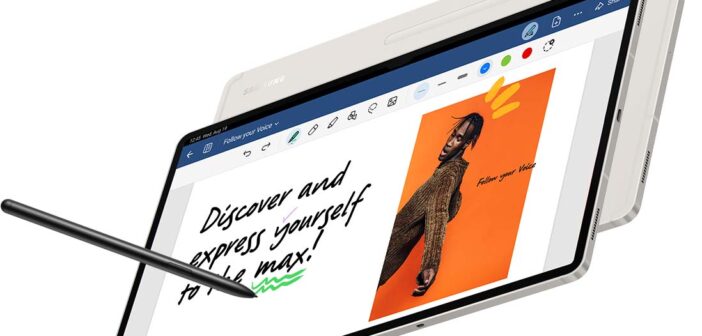It’s Samsung Unpacked season again, and the South Korean electronics giant has finally unveiled the latest iteration of its premium tablet and smartwatch series with the Galaxy Tab S9, and the Galaxy Watch 6. The devices were launched alongside the company’s newest foldable Android handsets, the Galaxy Z Flip5 and Galaxy Z Fold5.
With that in mind, Samsung has included some pretty good upgrades with the Tab S9 and Watch 6 series, offering users a tempting opportunity to upgrade from older devices. But what exactly do you get with them? Let’s take a look!
Galaxy Tab S9
First up we have the Galaxy Tab S9, which comes in three different variants consisting of the Galaxy tab S9, Galaxy Tab S9+, and the Galaxy Tab S9 Ultra. Samsung is definitely no stranger to releasing multiple variants of the same device, and the Tab S9 is no different.
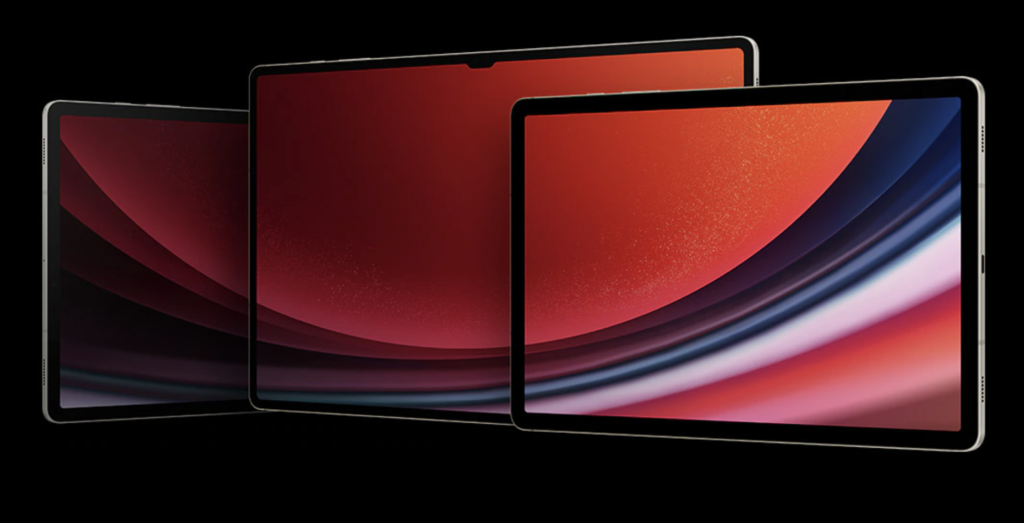
With that being said, each of the three tablet variants will come with varying display sizes. The base model Tab S9 is the “smallest” of the bunch, featuring an 11-inch display with 1600 x 2560 pixel resolution, followed by the Tab S9+ with a 12.4-inch display and 1752 x 2800 pixel resolution, and the S9 Ultra with a pretty large 14.6-inch display and 1848 x 2960 pixel resolution, putting it close to laptop territory.
Samsung does include some impressive screen technology with its hardware, which is the case for all three devices. Users can expect 120Hz refresh rates and Gorilla Glass protection, as well as an IP68 rating that adds dust and water resistance to the tablets’ metal unibodies. In addition to the generally-water resistant design, Samsung has also included a quad-speaker setup with the tablets with a sound system developed with AKG and Dolby Atmos, which according to the company will provide users with great-sounding audio.
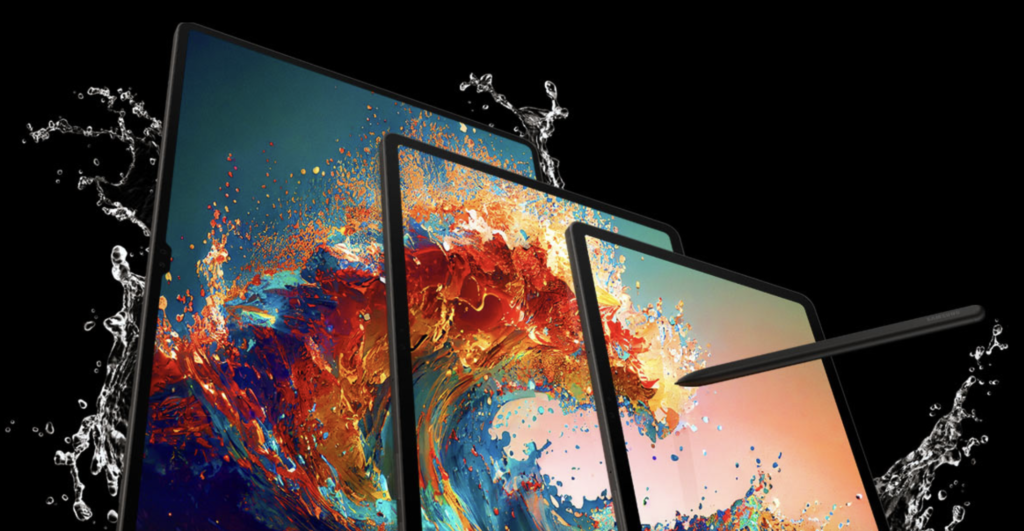
The regular Tab S9 comes in different storage variants with 128GB and 8GB RAM, 256GB and 12GB RAM, while the Tab S9+ comes with 256GB 12GB RAM and 512GB 12GB RAM variants, and the Tab S9 Ultra with 256GB 12GB RAM, 512GB 12GB RAM, and 1TB 16GB RAM variants. All tablet variants feature 13MP main cameras on the rear panel, and 12MP selfie cameras, with the addition of a 12MP ultrawide lens for the Tab S9 Ultra.
For battery, the Tab S9 comes with an 8400 mAh unit for the base model, 10090 mAh for the Plus variant, and 11,200 mAh for the Ultra model. Other hardware features include a micro SD card slot for storage expansion, so users can add even more internal storage to their device, and in-display optical fingerprint scanners for biometrics. There’s no 3.5mm headphone jack on either of the three models, which is a bit of a missed opportunity.
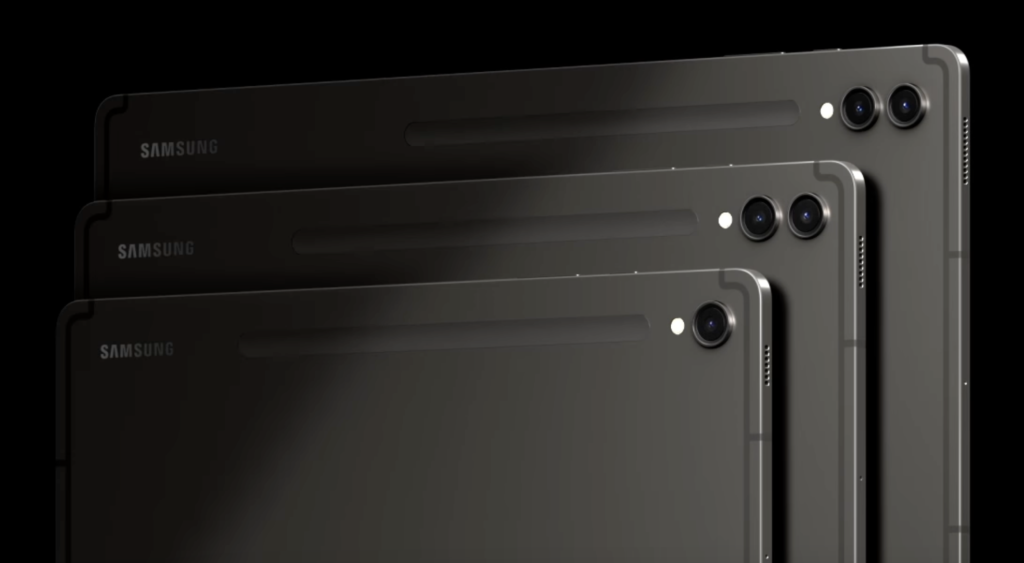
Samsung has also made a point of highlighting the Tab S9’s versatility as a productivity device, thanks to the powerful Qualcomm Snapdragon 8 gen 2 chip onboard. Of course, there’s a wide suite of software features including Multi Window support for using multiple apps at the same time, a pop-up view mode which gives a more “desktop” feeling vibe during usage, as well as DeX Mode, one of Samsung’s most useful software features that gives users a PC-like feel during usage. In terms of accessories, Samsung includes a keyboard cover that can connect wirelessly to the tablet, as well as S Pen support, a staple of the Galaxy Tab series.
In terms of pricing, the Samsung Galaxy Tab S9 will start at £799.99, while the Galaxy Tab S9+ will go for £999.99, while the Galaxy Tab S9 Ultra will be priced starting at £1,199.99. All three models are available for pre-order, and will be on sale on August 11.
Samsung Galaxy Watch6
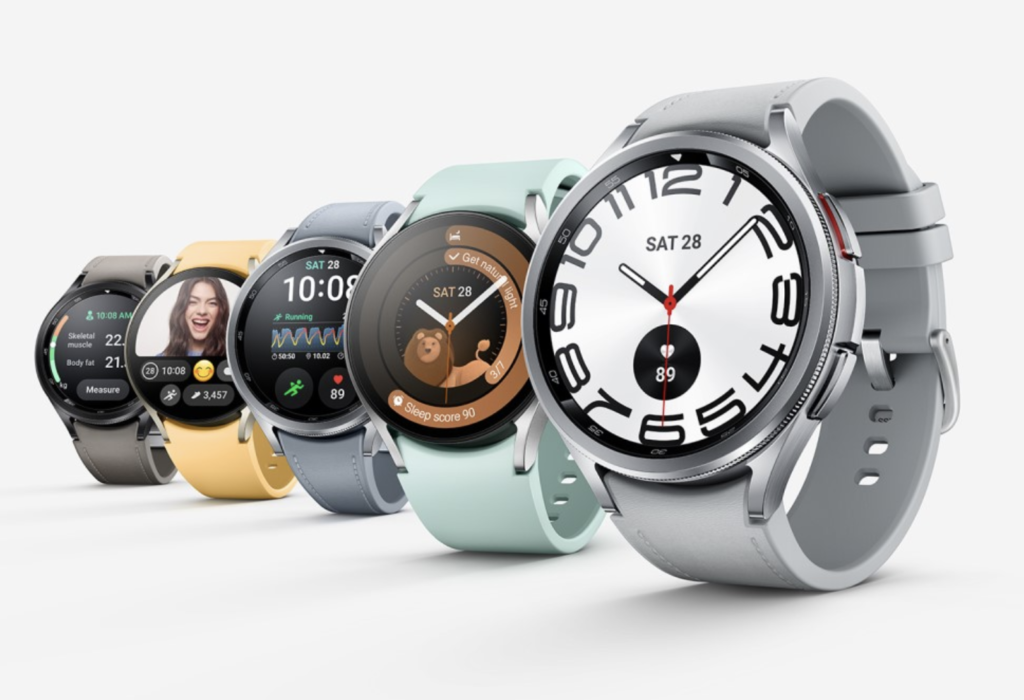
Up next is the Samsung Galaxy Watch6 series, which comes in a regular and “classic” variant. For this year, Samsung has gotten rid of the Pro variant that we saw on the Watch5 models, and has gone back to the classic variant as seen on the Galaxy Watch4 series, which includes a rotating bezel, which has become somewhat of a fan-favourite feature.
Overall though, Samsung hasn’t messed with the design too much, and you’d be forgiven for mistaking the regular Watch6 for the watch5 or even the 4. There’s a bit of change though, as the smaller variant features a 1.3-inch display, with a 1.5-inch display on the larger model. The watches are powered by Samsung’s Exynos W930 chipset (no Snapdragon here), alongside 2GB of RAM and 16GB of storage, something that only years before were seen on small Android phones.
Powering the Watch6 is a 300 mAh capacity cell for the smaller variant, although Samsung has included a larger 425 mAh battery inside the larger model.
As expected, Samsung has packed the Watch6 series with a ton of health and fitness tracking features, including refined metrics such as sleep tracking, personalized heart rate zones, support for third-party workout apps including Peloton, and your usual array of Google Wear OS apps.
In terms of availability, the Samsung Galaxy Watch6 starts at £289 for the 40mm model and £319 for the 44mm, while the Galaxy Watch6 Classic will be priced at £369 for the 43mm model, and £399 for the 47mm model.

